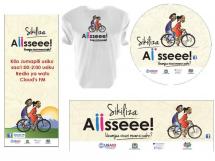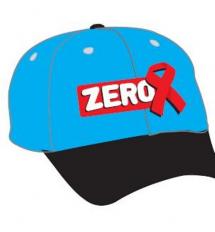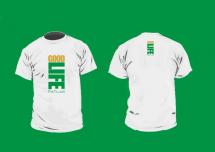Aiisseee! (I Say!) Game Show Collateral Materials
Aiisseee! (“I Say!”) is a television and radio-based game show designed to improve couple communication and promote couple connectedness by giving contestants and listeners the chance to discuss serious relationship issues in a humorous way. In these programs, couples answer questions to see how well they know their partners. The programs are a project of the Tanzania Capacity and Communication Project (TCCP).
The show acts as a platform for conversations about HIV prevention, maternal and child health, and family planning, using a subtle yet provocative approach to create a comfortable forum for addressing hard-to-discuss issues in a non-confrontational way.
The t-shirt, sticker, and other items shown here were produced to promote the game show.
Source: Johns Hopkins University Center for Communication Programs
Date of Publication: March 25, 2019
SIMILIAR RESOURCES
Tools
Examples
- Creative Concept Mockup Example
- Love, Children and Family Planning: Seven Discussion Guides for Christian Small Groups
- Zika and Pregnancy: Questions and Answers
- Healthy Timing and Spacing of Pregnancy Fact Sheet
- Family Planning Discussion Topics for Voluntary Counseling and Testing
- Beyond the ABCs of FTPs: A Deep Dive into Emerging Considerations for First Time Parent Programs
- GESI Toolkit
- Coronavirus and the Black Death: Spread of Misinformation and Xenophobia Shows We Haven’t Learned from Our Past
- Coronavirus Radio Show Guide and Running Order
- Scaling-Up First-Time and Young Parent Access to Postpartum Family Planning: Could Small Shifts Change the Game?









